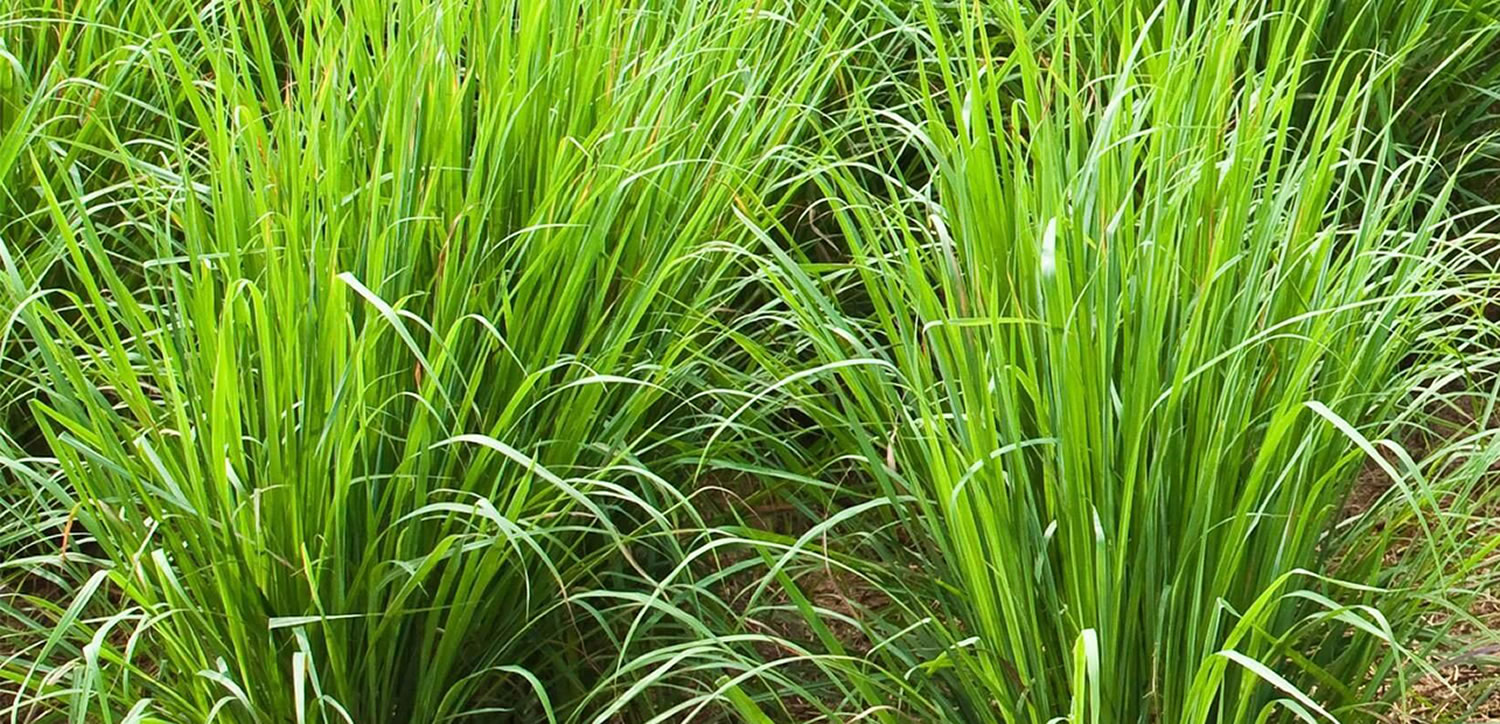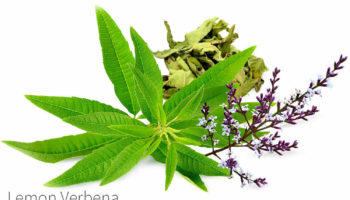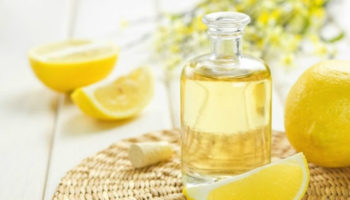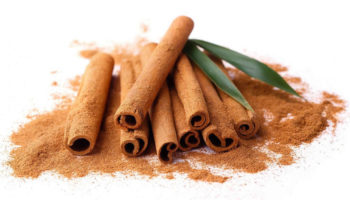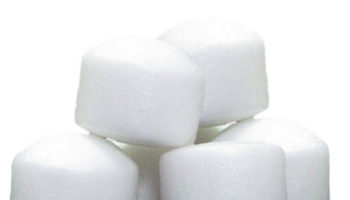Contents
What is vetiver
Vetiver grass (Chrysopogon zizanioides Linn.) formerly known as Vetiveria zizanioides Linn., is a fast growing perennial tussock grass of the Poaceae/Gramineae family with an extensive, dense and deep root system and strong stems, that develops at altitudes up to 2000 m in almost every soil type, although well-drained sand is considered the most appropriate subsoil for its growth 1. The stems being stiff, vetiver tufted grass can attain up to 2 m height 1. Native to India, vetiver was disseminated around the world some 100 years ago and is since widely cultivated in tropical regions for many different purposes (current major producers include Haiti, India, Indonesia, and Reunion Island) 2. The original primary use for vetiver was in the treatment of soil erosion 3. Although vetiver is still used to treat soil erosion because of its prolific root system, it is also used for its potential as a plant with phytoremediation traits to contaminated soils in the treatment of metalliferous-polluted ground due to its tolerance to heavy metals 3, 4. Phytoremediation is an emerging technology helping to clean the soil and water bodies from noxious pollutants. Vetiver grass has been demonstrated in this study to decrease diesel contamination in field and court-yard trials 4. In a lead/zinc (Pb/Zn) and copper (Cu) mine tailings ponds, vetiver achieved a higher yield reclamation of Pb/Zn and Cu mine tailing when compared with common reed, under the same treatment 5.
Vetiver grass is also grown for the production of the commercially and medicinally valued vetiver essential oil from its root 6 in Haiti, Indonesia, China, India, Brazil, Dominican Republic, India, Vietnam, EI Salvador, Reunion, Madagascar, etc. It is estimated that the world production of vetiver oil is in excess of 250 metric tonnes. There are two main chemotypes of vetiver oil. The one produced in India (known a khus oil) originates from a fertile form and the one grown outside of India which is a non-seeding, sterile form. Khus oil has been used for decades in Indian fragrances, while the rest of the world mainly uses vetiver oil produced from the sterile form. Vetiver essential oil has been frequently used as a functional ingredient and fragrance in foods, aromatic products, and cosmetics. The vetiver oil is an expensive edible oil in the Chinese market and which has also been used in India in many ways as a food additive, such as flavoring syrups, ice cream, and beverages and for food preservation 7. Moreover, vetiver essential oil is commonly used as traditional medicine in Thailand and India for the treatment of numerous syndromes, such as gastritis, fever, headache, mouth ulcers, toothache, and chronic inflammation 8.
Table 1. Gas chromatography–mass spectrometry analysis of the essential oil from vetiver
| Compound | Rt | KI | Area (%) | M.f. |
|---|---|---|---|---|
| 2,3,5,5,8,8-Hexamethyl-cycloocta-1,3,6-triene | 23.19 | 1314 | 2.28 | C14H22 |
| 1,5,9,9-Tetramethyl-2-methylene-spiro[3.5]non-5-ene | 24.08 | 1328 | 3.96 | C14H22 |
| (+)-Sativen | 25.51 | 1339 | 2.83 | C15H24 |
| 4,8,8-Trimethyl-2-methylene-4-vinylbicyclo[5.2.0]nonane | 25.62 | 1407 | 4.53 | C15H24 |
| α-Amorphene | 26.05 | 1440 | 7.80 | C15H24 |
| 2-Isopropenyl-1,3,5-trimethylbenzene | 26.14 | 1465 | 2.43 | C12H16 |
| α-Gurjunene | 26.22 | 1479 | 5.91 | C15H24 |
| β-Vatirenene | 26.30 | 1489 | 5.94 | C15H22 |
| δ-Cadinene | 26.55 | 1499 | 2.57 | C15H24 |
| β-Guaiene | 26.93 | 1523 | 4.28 | C15H24 |
| Dehydroaromadendrene | 27.05 | 1545 | 5.45 | C15H22 |
| Cubenol | 28.82 | 1580 | 2.09 | C15H26O |
| (+)-Ledene | 29.28 | 1605 | 4.77 | C15H24 |
| Epiglobulol | 29.42 | 1632 | 2.21 | C15H26O |
| Widdrol | 29.90 | 1651 | 2.13 | C15H26O |
| 6-Isopropenyl-4,8a-dimethyl-1,2,3,5,6,7,8,8a-octahydro-naphthalen-2-ol | 30.04 | 1690 | 1.97 | C15H24O |
| 3-(2-Isopropyl-5-methylphenyl)-2-methylpropionic acid | 30.17 | 1745 | 3.17 | C14H20O2 |
| Cedr-8-en-13-ol | 30.67 | 1769 | 12.36 | C15H24O |
| Ethyl 4-(4-methylphenyl)-4-pentenoate | 31.06 | 1804 | 2.12 | C16H20O3 |
| Isovellerdiol | 31.11 | 1842 | 2.38 | C15H24O2 |
| α-Curcumene | 31.16 | 1867 | 2.44 | C15H22 |
| 3,3,8,8-Tetramethyl-tricyclo[5.1.0.0(2,4)]oct-5-ene-5-propanoic acid | 31.38 | 1890 | 4.82 | C15H22O2 |
| Solavetivone | 31.46 | 1906 | 4.20 | C15H22O |
| 3,8-Dimethyl-4-(1-methylethylidene)-2,4,6,7,8,8a-hexahydro-5(1H)-azulenone | 31.82 | 1925 | 4.89 | C15H22O |
| (−)-Spathulenol | 31.88 | 1938 | 2.47 | C15H24O |
Note: Rt: retention time (min); KI: Kovats index; M.f.: molecular formula.
[Source 7]Figure 1. Vetiver grass
Vetiver uses
Almost all parts of vetiver are exploited in traditional medicines: reported to be among others, carminative, diuretic, diaphoretic and emmenagogue, vetiver also constitutes a renowned parasitic and anthelmintic agent 9. Vetiver is considered in several folk medicines as an alexiteric agent, e.g., a preservative against poisons and venoms: a paste of fresh roots is advocated against snakebites and scorpion stings 9. In Trinidad, vetiver tea is used to treat notably flu, colic, nausea and pleurisy 10. In the Philippines and Thailand, the vetiver root’s decoction is ingested to dissolve gallstones 11. An infusion prepared from pulverized vetiver roots provides a refreshing drink recommended to cool fevers and cure stomach diseases 12. Vetiver preparations are recommended topically to relieve pains in case of skin burns 1. Topically applied vetiver leaves paste was reported to relieve rheumatisms, lumbagos and sprains 9. Vetiver stem decoction is also used by tribes of West Bengal to relief urinary tract infection 9.
Because the substantial vertical root system of vetiver is finely structured and very strong (often measuring more than 3 m), this species is highly drought-tolerant and can help to stabilize soils, protecting them against sheet erosion 1. Extremely resistant to pests and diseases, the plant also protects fields against vermin and other pests, as well as weeds 1. The multipurpose species is also use as phytoremediation agent for metal-contaminated soils, mattress stuffing, animal bedding, animal feed, mulch (used for weed control in coffee, cocoa and tea plantations), a food additive/flavoring agent, etc. 13, but is mainly cultivated today to produce essential oil.
Vetiver oil uses
Obtained from the distillation of dried vetiver roots, vetiver essential oil is highly valued for cosmetics (soaps, deodorants, etc.), aromatherapy, perfumes (as base notes as well as perfume fixative), etc. 14. There are two main vetiver forms: one fertile form produced in India (generally known a khus oil) and one non-seeding, sterile form grown outside India; both produce essential oil 14. To favor the essential oil production, the plant needs to grow in humid to sub-humid conditions 1. Vetiver essential oil displays pleasant heavy, earthy-woody extremely persistent notes that could not be reproduced synthetically because of the essential oil’s molecular complexity 15: highly appreciated for its tenacity, it enters the formula of numerous modern fragrances both feminine and masculine 16. Vetiver oil has furthermore been extensively used in modern aromatherapy, notably for its sedative qualities and for its balancing/regulatory activity on skin 17.
In this way, vetiver oil constitutes a key ingredient for the perfume/cosmetic industry, but with the constant and rapid changes of personal tastes, this general appeal could decline quite quickly. In fact, the current annual trade estimated around 250 tons vetiver essential oil worldwide, worth $20–200 million per year, clearly demonstrates vetiver essential oil importance 18. Haiti is the world’s first exporter of vetiver and more than 50,000 families are totally and directly dependent on this resource for their living. A careful examination of the literature demonstrates that if the chemical composition of vetiver essential oil has been extensively analyzed, its biological properties have only been poorly investigated. Furthermore, given the heterogeneity of the results of such analysis, a report must be drawn up and complementary analysis are necessary to assess vetiver essential oil’s bioactivities.
Table 2. Composition of commercial vetiver essential oils
| Constituent | RI a,b HP-1/RI Lit | Vetiver essential oils | Identification Method |
|---|---|---|---|
| n.i. | 1360/- | 0.4–1.0 | |
| α-cubebene | 1366/1355 | tr–0.1 | LRI, MS |
| α-ylangene | 1370/1376 | tr–0.2 | LRI, MS |
| α-cedrene | 1410/1418 | 0.1–0.3 | LRI, MS |
| acoradi-2,4-ene | 1421/1421 | 0.1–0.3 | LRI |
| n.i. | 1427/- | 0.1–0.4 | |
| n.i. | 1443/- | 0.3–0.8 | |
| preziza-7(15)-ene | 1448/1448 | 0.5–1.1 | LRI |
| ziza-6(13)-ene = khusimene | 1452/1453 | 0.1–0.3 | LRI |
| n.i. | 1462/- | 0.1–0.4 | |
| n.i. | 1466/- | 0.2–0.4 | |
| α-amorphene | 1475/1477 | 0.5–1.9 | LRI, MS |
| n.i. | 1481/- | 1.0–2.2 | |
| n.i. | 1485/- | 0.6–1.8 | |
| γ-muurolene | 1488/1474 | 0.2–0.6 | LRI, MS |
| n.i. | 1501/- | 0.3–0.8 | |
| δ-cadinene | 1522/1520 | 0.9–1.3 | LRI |
| α-calacorene | 1529/1527 | 0.4–0.7 | LRI, MS |
| β-vetivenene | 1547/1547 | /–4.6 | LRI |
| n.i. | 1554/- | 1.1–1.3 | |
| khusimone | 1577/1577 | 1.2–2.3 | LRI |
| khusian-2-ol | 1666/1668 | 1.8–2.3 | LRI, MS |
| 13-nor-eudesma-4,6-dien-11-one | 1685/1692 | 0.7–0.9 | LRI, MS |
| eudesma-3,5-dien-1α-ol | 1707/1708 | 1.7–1.8 | LRI |
| khusimol | 1730/1726 | 0.6–8.9 | LRI |
| n.i. | 1774/- | 2.1–2.9 | |
| β-vetivone | 1785/1788 | 2.2–3.7 | LRI, MS |
| α-vetivone = isonootkatone | 1808/1813 | 8.4–13.3 | LRI, MS |
| ziza-6(13)-en-12-yl acetate = khusimyl acetate | 1832/1828 | 0.4–0.7 | LRI, MS |
Notes: a Compounds are listed in order of their elution time from a HP-1 column. Compositional values inferior to 0.1% are noted as traces (tr). Presence of a compound is indicated by its GC-FID percentage, absence is indicated by “/”. b RI = retention indices are determined on a HP-1 column using the homologous series of n-alkanes (C6-C24).
[Source 19]The analysis of three commercial vetiver essential oils from the Reunion Island using a combination of gas chromatography-flame ionization detector and gas chromatography–mass spectrometry revealed that they possessed typical vetiver essential oils chemical profiles, consistent with those previously published in the literature 20. Major vetiver components have been detected, among which α-vetivone (8.4–13.3%), khusimol (0.6–8.9%), β-vetivenene (identified only in Ve1501: 4.6%), β-vetivone (2.2–3.7%), khusian-2-ol (1.8–2.3%) and khusimone (1.2–2.3%) have been characterized based on their retention indexes and mass fragmentation, as well as based on data published previously (Table 2). Trace compounds are not indicated in Table 2.
The chemical examination of vetiver essential oil has been the subject of many investigations 21; it is therefore well known that it is one if not the most complex essential oil produced 21 and not all the components have yet been identified 22. Added to this, vetiver oils display a strong compositional variability according to their geographic origins 9. A recent review by Belhassen et al. 23 lists the structures of the volatiles components characterized in vetiver essential oils. Gas chromatography constitutes the most powerful method of analysis of vetiver essential oils, however preliminary efficient fractionation is generally recommended for extensive chemical characterization.
In their comparative study of commercial essential oils from several geographical origins, Champagnat et al. 24 observed the opposite predominance in vetiver essential oils from Reunion Island: khusimol is the major component (13.3%), followed by the α-vetivone (6.4%) 25. Khusimyl acetate has also been identified in these essential oils (0.4–0.7%): Andersen 26 stated that the occurrence of esters in vetiver essential oils is quite occasional and that it is generally limited to khusimyl acetate which could stem from chemical degradation in older samples.
Potential uses of vetiver oils
Vetiver essential oil is a key ingredient for the perfume/personal care industry, but with the constant and rapid changes of personal tastes, this appeal could vanish quite quickly. Based on a literature survey on vetiver bioactivities and as new dissemination paths need to be found to tap the potential use of vetiver essential oil in cosmetics either as an active ingredient per se (with cosmeceutical significance or presenting antimicrobial activity) or as a natural antimicrobial agent has hence been explored in vitro.
Cosmetic Ingredient
Vetiver oil has been claimed benefic in skin care, particularly for sensitive and older skin, due to its antiseptic, tonic and detoxifying properties 9. Declared useful to balance sebaceous gland activity, it hence helps normalize oily skin and clearing acne 19. It is also claimed to promote skin rejuvenation and to strengthen connective tissue, thus assisting with wound healing of mature, irritated and inflamed skins 15. Vetiver oil is also known to replenish moisture in dehydrated and dry skins and even to prevent stretch marks 15. Therefore, some authors report the use of vetiver oil in cosmetic formulas recommended for the treatment of skin’ overproduction of sebum, resulting in acne flare-ups and weeping sores 27. Not toxic and nonirritant, vetiver oil also presents deodorizing properties 28. Despite the interest for this grass essential oil, only few studies have been published to scientifically assess these cosmetic allegations and furthermore the published results are often contradictory.
As shown in Table 3, vetiver essential oils display only weak anti-oxidant activity. These results are consistent with the observations of some authors 29. On the contrary, Kim et al. 30 suggest that crude vetiver oil is competitive to well-known synthetic anti-oxidants, e.g., BHT (butylated hydroxytoluene) and α-tocopherol, and that this activity might be linked to its β-vetivenene, β-vetivone and α-vetivone content, all three displaying strong anti-oxidant activities when tested individually. Several other studies confirmed that vetiver oil exhibits significant anti-oxidant activity 31. A larger set of vetiver essential oils should be assayed using several anti-oxidant tests (DPPH, ORAC, etc.) to solve this recurrent contradiction about the anti-oxidant activity of vetiver essential oil 19.
Table 3. Test tube cosmetic bioassays performed using three commercial vetiver essential oils
| Sample Reference | Anti-Oxidant Activity | Whitening Activity | Anti-Inflammatory Activity | Anti-Elastase Activity | Anti-Collagenase Activity | Anti-Hyaluronidase Activity | |
|---|---|---|---|---|---|---|---|
| L-Tyrosine | L-DOPA | ||||||
| Vy1501 | + | + | − | ++ | + | − | − |
| Vy1502 | + | + | − | + | + | − | − |
| Vy1503 | + | − | − | + | + | − | − |
Notes: (−): no activity; (+): 0% < inhibition < 30%; (++): 30% < inhibition < 60%; (+++): 60% < inhibition < 90%; (++++): inhibition > 90%.
This test tube study 7 indicated that vetiver essential oil exhibits powerful antioxidative activity on lipid peroxidation to moderate the bleaching of β-carotene and to maintain the cellular glutathione peroxidase level. Vetiver essential oil can markedly decrease melanin production in α-melanin-stimulating-hormone- (α-MSH-) stimulated B16 cells. The effect of vetiver essential oil on the melanogenesis induced by α-melanin-stimulating-hormone in B16 cells is achieved through the suppression of cellular tyrosinase expression. The function of vetiver essential oil on melanogenesis might result from its potent antioxidative ability, which is reflected by the restoration of the cellular superoxide dismutase, glutathione peroxidase, and catalase activities in α-melanin-stimulating-hormone-stimulated B16 cells. The most abundant component of vetiver essential oil is cedr-8-en-13-ol (12.4%), which has the ability to inhibit lipid peroxidation strongly. Therefore, vetiver essential oil has the potential to become an ingredient in future hypopigmentation drugs, foods, and cosmetics 7. On the contrary, only weak or even no whitening activity of vetiver essential oils was evidenced in an observation study 29.
Vetiver oil displays some interesting lipoxygenase inhibitory activity, as already noticed in the literature, even it has never been used in aromatherapy for this potential 32. One could imagine the creation of vetiver oil-based ingredients that would therefore have the dual function of perfuming and of skin soothing via this anti-inflammatory potency.
As presented in Table 3, vetiver oil displays no interesting anti-aging activity, as no inhibitory activity of collagenase or hyaluronidase was observed and only a weak anti-elastasic activity was evidenced; no mention of such an inhibitory activity could be found in the literature 19.
Antimicrobial agent or cosmetic preservative
Several studies have reported that vetiver oil possesses antibacterial and antifungal activities against various pathogenic strains. These activities have been assessed using different in vitro methods, such as the cup bore method, the disk diffusion method and more rarely, the broth dilution method: results were expressed either in %v/v, µL/mL or µg/mL, and were sometimes divergent 33. Moreover, activities of vetiver extracts were also reported against several drug-resistant bacterial pathogeneses, but only few of these claims were actually confirmed by laboratory assays 34. To confirm/disconfirm those reported results, in vitro antibacterial and antifungal activities of the commercial vetiver essential oils were assessed using the microbroth dilution method against twenty bacterial pathogenic strains and two Candida species: the results, expressed as minimum inhibitory concentrations (MICs – is the lowest concentration of a chemical which prevents visible growth of a bacterium), are presented in Table 4.
The commercial vetiver essential oils appeared to be mostly active against Gram-positive strains, i.e., Staphylococcus aureus (both susceptible and resistant to methicillin), Corynebacterium striatum and against both Bacillus strains, with minimum inhibitory concentrations (MICs) comprised between 500 and 2000 µg/mL, (i.e., between 0.5 and 2 µL/mL or 0.05 to 0.2% v/v). One can observe a consensus in the reported literature: the authors report the antibacterial activity of vetiver oil against Gram-positive strain, mainly S. aureus, while no activity is mentioned against Gram-negative bacteria 35.
Hence, comparing the values presented in Table 4 below with previously published ones, one can state that, although the method employed to assess these antibacterial activities is different, these results are in total accordance with those from the literature 36. On the other hand, the minimum inhibitory concentrations presented here are weaker than those previously reported for Staphylococcus aureus 37. Nevertheless, the interesting growth inhibition activity of vetiver essential oils obtained on Staphylococcus aureus resistant to methicillin (SARM) strains must be noticed; resistance developed towards antibiotics by pathogenic strains is more and more frequently observed. This phenomenon may be linked to the massive use of conventional preservatives or therapeutic agents and this subsequent resistance developed by bacterial strains constitutes a real public health issue 38. These engaging results against staphylococcus aureus resistant to methicillin (SARM) pave the way for a new potential use of vetiver essential oils as promising anti-staphylococcus aureus resistant to methicillin agents.
The antifungal minimum inhibitory concentration reported here are slightly higher than the published values 35. Assessing the anticandidal activity of plant extracts, some researchers only consider activities equivalent to those of antifungal drugs, whereas others consider the higher values obtained for plant constituents 39, as licensed drugs are generally effective at considerably lower concentrations 40. Consequently, a classification of plant materials was established based on their fungal inhibition capacity outlined by minimum inhibitory concentration (MIC) values: strong inhibitors are characterized by minimum inhibitory concentrations up to 500 µg/mL and are differentiated from moderate ones exhibiting minimum inhibitory concentrations comprised between 600 and 1500 µg/mL and from weak ones presenting minimum inhibitory concentrations higher than 1600 µg/mL 41. Therefore, following this classification, vetiver essential oil appears to be a moderate inhibitor of Candida albicans and a strong inhibitor of Candida glabrata. This result is particularly outstanding: indeed, the incidence of systemic infections due to non-albicans Candida species has increased markedly since the 1970s 42, mainly due to the extensive use of prophylactic and therapeutic antifungals, and to the primary low susceptibility of some of these yeast species to azoles, i.e., most widely used antifungals 43. For instance, in some countries such as the USA, Candida glabrata is currently the second yeast species responsible for clinical forms of candidiasis 44. Exhibiting a low primary susceptibility to azole drugs, this species also displays a high frequency of acquired resistance 45.
Table 4. Antimicrobial activities of vetiver essential oils expressed as minimum inhibitory concentrations (MICs) on eight Gram-positive and 12 Gram-negative bacterial strains (µg/mL), and on two Candida species (µg/mL)
| Bacterial Strains Tested | Ve1501 | Ve1502 | Ve1503 |
|---|---|---|---|
| MICs (µg/mL) | |||
| Gram-negative bacteria | |||
| Acinetobacter baumannii RCH | >2000 | >2000 | >1000 |
| Acinetobacter baumannii SAN008 | >2000 | >2000 | >1000 |
| Acinetobacter baumannii AYE | >2000 | >2000 | >1000 |
| Escherichia coli ATCC25922 | >2000 | >2000 | >1000 |
| Escherichia coli BLSE 15509082801 | >2000 | >2000 | >1000 |
| Enterobacter aerogenes 15509970101 | >2000 | >2000 | >1000 |
| Enterobacter aerogenes 15501261101 | >2000 | >2000 | >1000 |
| Klebsiella pneumoniae BHR (OXA48) | >2000 | >2000 | >1000 |
| Klebsiella pneumoniae 15000077501 | >2000 | >2000 | >1000 |
| Pseudomonas aeruginosa ATCC27853 | >2000 | >2000 | >1000 |
| Pseudomonas aeruginosa 155089996501 | >2000 | >2000 | >1000 |
| Pseudomonas aeruginosa 15509942001 | >2000 | >2000 | >1000 |
| Gram-positive bacteria | |||
| SARM 15004850001 | 1000 | 2000 | ≤1000 |
| SARM 15004306601 | ≤500 | 2000 | ≤1000 |
| SASM 15509530101 | 1000 | 2000 | ≤1000 |
| SASM 15004159801 | ≤500 | 2000 | ≤1000 |
| SERM 15511909903 | 1000 | 2000 | ≤1000 |
| Corynebacterium striatum 12572545501 | ≤500 | 2000 | ≤1000 |
| Bacillus sp. 15003287301 | ≤500 | 2000 | ≤1000 |
| Bacillus subtilis 15000964701 | ≤500 | 2000 | ≤1000 |
| Fungal Strains Tested | MICs (µg/mL) | ||
| Candida albicans ATCC66396 (Amphotericin B-MIC80: 0.125 µg/mL) | 800 | 800 | 200 |
| Candida glabrata LMA901085 (Amphotericin B-MIC80: 0.5 µg/mL) | 400 | 200 | 100 |
Notes:
SARM: Staphylococcus aureus resistant to methicillin; SASM: Staphylococcus aureus susceptible to methicillin; SERM: Staphylococcus epidermidis resistant to methicillin. Amphotericin: antifungal agent used as positive control.
[Source 19]Vetiver essential oil benefits
Vetiver essential oil, key ingredient for the perfume/personal care industry, might be threatened by obsolescence—similar to many others flagship cosmetic ingredients—due to constant and rapid changes in consumer tastes 19.
Based on a thorough literature survey, vetiver essential oil appeared as benefic in skin care but not all cosmetic conditions were scientifically proven, or, if so, the results were often contradictory. No convincing cosmetic activity could be raised despite a series of bioassays was undertaken to clarify their purported skin benefits (see Table 3 above – Test tube cosmetic bioassays performed using three commercial vetiver essential oils).
Some antimicrobial assays have then been performed (see Table 4), as essential oils might be sources of interesting antibacterial/antifungal molecules. The antibacterial activities reported were in relative accordance with those from the literature: vetiver essential oil is mainly active on Gram-positive strains, especially on Staphylococcus aureus strains, either susceptible or resistant to methicillin 19.
Recently, evaluating the ability of several essential oils to remove Staphylococcus aureus, a food-borne pathogen, from food-processing facilities, Vázquez Sánchez et al. 46 observed a significant reduction of the number of viable biofilm cells induced by almost all of the essential oils tested, but none of them could inhibit completely the formation of those biofilms. Essential oil-based treatments consisting in combinations of various essential oils alone (in rotation) or together with other biocides might be conceived to prevent the appearance of resistant bacterial strains in the food industry. Besides, one should also note that the original antifungal activity already known against Candida albicans, actually extends to Candida glabrata. Vetiver essential oil might constitute a potential source of novel anti-Candida compounds and lead to the development of alternative antifungal agents.
Therefore, from these results as well as from previously published ones, it can be concluded that vetiver essential oil should be considered as a potential alternative for synthetic biocides against emerging antibiotic-resistant microorganisms, presenting less harmful side effects and lower treatment costs. None of the compounds characterized in the vetiver essential oils analyzed has previously been identified as displaying any antibacterial or antifungal activity. Hence, the antimicrobial results obtained for vetiver essential oils may tentatively be attributed to the joint action of their major components, but synergetic/antagonist effects of some less abundant constituents cannot be ruled out. A subsequent bio-guided fractionation of these essential oils should be considered to further identify specifically active compounds.
- Maffei M. Vetiveria. The Genus Vetiveria; Medicinal and Aromatic Plants-Industrial Profiles. Taylor and Francis; London, UK: New York, NY, USA: 2002. Introduction to the Genus Vetiveria.[↩][↩][↩][↩][↩][↩]
- Lawrence B.M. Progress in essential oils. https://www.perfumerflavorist.com/fragrance/rawmaterials/natural/Progress-in-Essential-Oils-October-2016-395808781.html[↩]
- Growth of Vetiveria zizanioides and Phragmities australis on Pb/Zn and Cu mine tailings amended with manure compost and sewage sludge: a greenhouse study. Chiu KK, Ye ZH, Wong MH. Bioresour Technol. 2006 Jan; 97(1):158-70. https://www.ncbi.nlm.nih.gov/pubmed/16154513/[↩][↩]
- Agronomic and economic evaluation of Vetiver grass (Vetiveria zizanioides L.) as means for phytoremediation of diesel polluted soils in Israel. J Environ Manage. 2018 Apr 1;211:247-255. doi: 10.1016/j.jenvman.2018.01.013. Epub 2018 Feb 4. https://www.sciencedirect.com/science/article/pii/S0301479718300136[↩][↩]
- Growth of Vetiveria zizanioides and Phragmities australis on Pb/Zn and Cu mine tailings amended with manure compost and sewage sludge: a greenhouse study. Bioresour Technol. 2006 Jan;97(1):158-70. Epub 2005 Mar 31. https://www.sciencedirect.com/science/article/pii/S0960852405000994[↩]
- The microbial community of Vetiver root and its involvement into essential oil biogenesis. Del Giudice L, Massardo DR, Pontieri P, Bertea CM, Mombello D, Carata E, Tredici SM, Talà A, Mucciarelli M, Groudeva VI, De Stefano M, Vigliotta G, Maffei ME, Alifano P. Environ Microbiol. 2008 Oct; 10(10):2824-41. https://www.ncbi.nlm.nih.gov/pubmed/18662308/[↩]
- Peng H-Y, Lai C-C, Lin C-C, Chou S-T. Effect of Vetiveria zizanioides Essential Oil on Melanogenesis in Melanoma Cells: Downregulation of Tyrosinase Expression and Suppression of Oxidative Stress. The Scientific World Journal. 2014;2014:213013. doi:10.1155/2014/213013. https://www.ncbi.nlm.nih.gov/pmc/articles/PMC3977460/[↩][↩][↩][↩]
- Aibibu N, Liu Y, Zeng G, et al. Cadmium accumulation in Vetiveria zizanioides and its effects on growth, physiological and biochemical characters. Bioresource Technology. 2010;101(16):6297–6303. https://www.ncbi.nlm.nih.gov/pubmed/20403690[↩]
- http://www.vetiver.org/[↩][↩][↩][↩][↩][↩]
- Wong W. Some folk medicinal plants from Trinidad. Econ. Bot. 1976;30:103–142. doi: 10.1007/BF02862958[↩]
- Chomchalow N., Chapman K. Other uses and utilization of vetiver; Proceedings of the 3rd Conference of Vetiver and Exhibition; Guangzhou, China. 2003 http://prvn.rdpb.go.th/files/7-01.pdf[↩]
- Duke J.A., du Cellier J.L. Handbook of Alternative Cash Crops. CRC Press; Boca Raton, FL, USA: 1993[↩]
- Peng H.-Y., Lai C.-C., Lin C.-C., Chou S.-T. Effect of Vetiveria zizanioides essential oil on melanogenesis in melanoma cells: Downregulation of tyrosinase expression and suppression of oxidative stress. Sci. World J. 2014;2014:e213013. doi: 10.1155/2014/213013 https://www.ncbi.nlm.nih.gov/pmc/articles/PMC3977460/[↩]
- https://www.perfumerflavorist.com/fragrance/rawmaterials/natural/Progress-in-Essential-Oils-October-2016-395808781.html[↩][↩]
- Chahal K.K., Bhardwaj U., Kaushal S., Sandhu A.K. Chemical composition and biological properties of Chrysopogon zizanioides (L.) Roberty syn. Vetiveria zizanioides (L.) Nash-A Review. Indian J. Nat. Prod. Resour. 2015;6:251–260.[↩][↩][↩]
- Filippi J.-J., Belhassen E., Baldovini N., Brevard H., Meierhenrich U.J. Qualitative and quantitative analysis of vetiver essential oils by comprehensive two-dimensional gas chromatography and comprehensive two-dimensional gas chromatography/mass spectrometry. J. Chromatogr. A. 2013;1288:127–148. doi: 10.1016/j.chroma.2013.03.002 https://www.ncbi.nlm.nih.gov/pubmed/23522261[↩]
- Chomchalow N., Chapman K. Other uses and utilization of vetiver; Proceedings of the 3rd Conference of Vetiver and Exhibition; Guangzhou, China. 2003; [(accessed on 10 October 2003)]. pp. 6–9. Available online: http://prvn.rdpb.go.th/files/7-01.pdf.[↩]
- Lavania U.C. Other uses and utilization of vetiver: Vetiver oil; Proceedings of the Third International Conference on Vetiver and Exhibition; Guangzhou, China. 2003.[↩]
- Burger P, Landreau A, Watson M, et al. Vetiver Essential Oil in Cosmetics: What Is New? Skaltsa E, ed. Medicines. 2017;4(2):41. doi:10.3390/medicines4020041. https://www.ncbi.nlm.nih.gov/pmc/articles/PMC5590077/[↩][↩][↩][↩][↩][↩][↩][↩]
- Champagnat P., Figueredo G., Chalchat J.-C., Carnat A.-P., Bessiere J.-M. A study on the composition of commercial Vetiveria zizanioides oils from different geographical origins. J. Essent. Oil Res. 2006;18:416–422. doi: 10.1080/10412905.2006.9699129[↩]
- Lawrence B.M. Progress in essential oils. Perfum. Flavorist. 2008;33:56–65.[↩][↩]
- Belhassen E., Baldovini N., Brevard H., Meierhenrich U.J., Filippi J.-J. Unravelling the scent of vetiver: Identification of character-impact compounds. Chem. Biodivers. 2014;11:1821–1842. doi: 10.1002/cbdv.201400079. https://www.ncbi.nlm.nih.gov/pubmed/25408325[↩]
- Belhassen E., Filippi J.-J., Brévard H., Joulain D., Baldovini N. Volatile constituents of vetiver: A review. Flavour Fragr. J. 2015;30:26–82. doi: 10.1002/ffj.3227.[↩]
- Champagnat P., Figueredo G., Chalchat J.-C., Carnat A.-P., Bessiere J.-M. A study on the composition of commercial Vetiveria zizanioides oils from different geographical origins. J. Essent. Oil Res. 2006;18:416–422. doi: 10.1080/10412905.2006.9699129.[↩]
- Chomchalow N., Chapman K. Other uses and utilization of vetiver; Proceedings of the 3rd Conference of Vetiver and Exhibition; Guangzhou, China. 2003; pp. 6–9. Available online: http://prvn.rdpb.go.th/files/7-01.pdf[↩]
- Andersen N.H. The structures of zizanol and vetiselinenol. Tetrahedron Lett. 1970;21:1755–1758. doi: 10.1016/S0040-4039(01)98075-X[↩]
- Curtis S. Essential Oils. Aurum Press; London, UK: North Pomfret, VT, USA: 1996. Neal’s Yard Remedies.[↩]
- Chomchalow N., Chapman K. Other uses and utilization of vetiver; Proceedings of the 3rd Conference of Vetiver and Exhibition; Guangzhou, China. 2003; [(accessed on 10 October 2003)]. pp. 6–9. Available online: http://prvn.rdpb.go.th/files/7-01.pdf[↩]
- Manosroi A., Manosroi J. Free radical scavenging and tyrosinase inhibition activity of aromatic volatile oil from Thai medicinal plants for cosmetic uses. Acta Hortic. 2005:97–100. doi: 10.17660/ActaHortic.2005.680.13[↩][↩]
- Kim H.-J., Chen F., Wang X., Chung H.Y., Jin Z. Evaluation of antioxidant activity of vetiver (Vetiveria zizanioides L.) oil and identification of its antioxidant constituents. J. Agric. Food Chem. 2005;53:7691–7695. doi: 10.1021/jf050833e https://www.ncbi.nlm.nih.gov/pubmed/16190618[↩]
- Chou S.-T., Lai C.-P., Lin C.-C., Shih Y. Study of the chemical composition, antioxidant activity and anti-inflammatory activity of essential oil from Vetiveria zizanioides. Food Chem. 2012;134:262–268. doi: 10.1016/j.foodchem.2012.02.131[↩]
- Baylac S., Racine P. Inhibition of 5-lipoxygenase by essential oils and other natural fragrant extracts. Int. J. Aromather. 2003;13:138–142. doi: 10.1016/S0962-4562(03)00083-3.[↩]
- Prabuseenivasan S., Jayakumar M., Ignacimuthu S. In vitro antibacterial activity of some plant essential oils. BMC Complement. Altern. Med. 2006;6:39 doi: 10.1186/1472-6882-6-39. https://www.ncbi.nlm.nih.gov/pmc/articles/PMC1693916/[↩]
- Singh P., Srinivasan K.K., Subburaju T., Singh S.K. Antifungal activity of alcoholic and aqueous extracts of Vetiveria zizanioides. J. Pharm. Res. Opin. 2011,1. http://innovativejournal.in/index.php/jpro/article/view/658[↩]
- Hammer K.A., Carson C.F. Antibacterial and antifungal activities of essential oils. In: Thormar M., editor. Lipids and Essential Oils as Antimicrobial Agents. Wiley; New York, NY, USA: 2011. p. 334.[↩][↩]
- Champagnat P., Sidibé L., Forestier C., Carnat A., Chalchat J.-C., Lamaison J.-L. Antimicrobial activity of essential oils from Vetiveria nigritana and Vetiveria zizanioides roots. J. Essent. Oil Bear. Plants. 2007;10:519–524. doi: 10.1080/0972060X.2007.10643589[↩]
- Hammer K.A., Carson C.F., Riley T.V. Antimicrobial activity of essential oils and other plant extracts. J. Appl. Microbiol. 1999;86:985–990. doi: 10.1046/j.1365-2672.1999.00780.x https://www.ncbi.nlm.nih.gov/pubmed/10438227[↩]
- Yagupsky P. Selection of antibiotic-resistant pathogens in the community. Pediatr. Infect. Dis. J. 2006;25:974–976. doi: 10.1097/01.inf.0000239270.33190.71 https://www.ncbi.nlm.nih.gov/pubmed/17006309[↩]
- Duarte M.C.T., Figueira G.M., Sartoratto A., Rehder V.L.G., Delarmelina C. Anti-Candida activity of Brazilian medicinal plants. J. Ethnopharmacol. 2005;97:305–311. doi: 10.1016/j.jep.2004.11.016. https://www.ncbi.nlm.nih.gov/pubmed/15707770[↩]
- Pauli A. Anticandidal low molecular compounds from higher plants with special reference to compounds from essential oils. Med. Res. Rev. 2006;26:223–268. doi: 10.1002/med.20050 https://www.ncbi.nlm.nih.gov/pubmed/16331694[↩]
- Aligiannis N., Kalpoutzakis E., Mitaku S., Chinou I.B. Composition and antimicrobial activity of the essential oils of two Origanum species. J. Agric. Food Chem. 2001;49:4168–4170. doi: 10.1021/jf001494m https://www.ncbi.nlm.nih.gov/pubmed/11559104[↩]
- Spampinato C., Leonardi D. Candida infections, causes, targets, and resistance mechanisms: Traditional and alternative antifungal agents. Biomed. Res. Int. 2013 2013 doi: 10.1155/2013/204237 https://www.ncbi.nlm.nih.gov/pmc/articles/PMC3708393/[↩]
- Brion L.P., Uko S.E., Goldman D.L. Risk of resistance associated with fluconazole prophylaxis: Systematic review. J. Infect. 2007;54:521–529. doi: 10.1016/j.jinf.2006.11.017 https://www.ncbi.nlm.nih.gov/pubmed/17239952[↩]
- Li L., Redding S., Dongari-Bagtzoglou A. Candida glabrata, an emerging oral opportunistic pathogen. J. Dent. Res. 2007;86:204–215. doi: 10.1177/154405910708600304 https://www.ncbi.nlm.nih.gov/pubmed/17314251[↩]
- Vandeputte P., Pineau L., Larcher G., Noel T., Brèthes D., Chabasse D., Bouchara J.-P. Molecular mechanisms of resistance to 5-fluorocytosine in laboratory mutants of Candida glabrata. Mycopathologia. 2011;171:11–21. doi: 10.1007/s11046-010-9342-1 https://www.ncbi.nlm.nih.gov/pubmed/20617462[↩]
- Vázquez-Sánchez D., Cabo M.L., Rodríguez-Herrera J.J. Antimicrobial activity of essential oils against Staphylococcus aureus biofilms. Food Sci. Technol. Int. 2015;21:559–570. doi: 10.1177/1082013214553996 https://www.ncbi.nlm.nih.gov/pubmed/25280938[↩]
